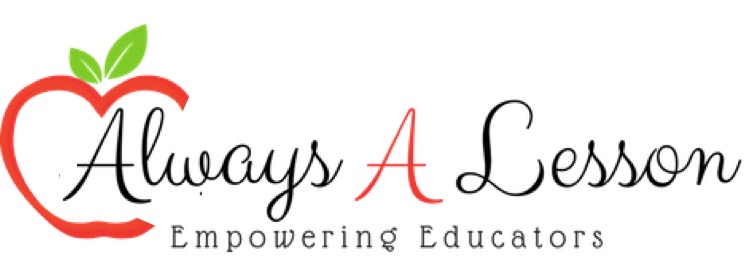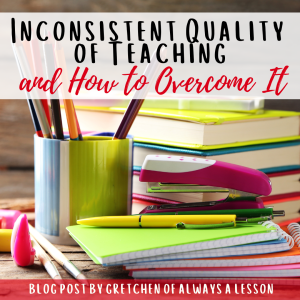Inconsistent Quality of Teaching & How to Overcome It
The inconsistent quality of teaching among staff members is emerging as an obstacle in teacher leadership. The Common Core set out to ensure every classroom, regardless of state of residence, taught the same content at the same level. Now many states have replaced Common Core with their own state specific requirements for teaching. This means the level of teaching differs from class to class and school to school.
Every child deserves a high-quality education, no matter which teacher they have. To fix this issue, school leaders are now setting aside time to focus on consistent, high-quality teaching. When all leaders do this, every student gets a fair chance to succeed.
This post explains what causes these differences and shares a simple plan school leaders can use to fix them.
Contributing Factors
The following list includes five common factors that lead to variations in the quality of instruction for students in the classroom.
- Lesson planning preference– use curriculum maps, pacing templates, data reports, student interests and learning preferences to plan a lesson
- Instructional delivery style– execute the lesson they planned, including ways to explain the content and engage students in understanding it
- Assessment design process – create an assessment aligned to the standards and curriculum
- Instructional strategies tool belt– implement a variety of ways for students to engage with the content, each other and the teacher to deepen their understanding of grade level content
- Differentiation and personalization– provide instruction on the proficiency level of each individual student on the class roster that includes 1:1, small and large group settings
A Note About Rigor
Teachers may have different understandings of what constitutes rigorous instruction. This leads to inconsistencies in how they challenge students. Rigor is not simply about making things harder for students, but about creating opportunities for them to engage in complex thinking, problem-solving, and critical analysis. This prepares students for college and career success. Rigorous instruction can involve activities like asking higher-order questions, engaging in debates, conducting research, and creating projects. These activities require students to go beyond rote memorization. When rigor is inconsistent, students may not have equal opportunities to develop their critical thinking and problem-solving skills. Some students may be consistently challenged, while others may not be pushed to their full potential. Therefore, it is essential that all teachers are designing and delivering rigorous instruction on a consistent basis.
Strategy of Attack on Inconsistent Quality of Teaching
Now that we know what the problem is and why it exists, we can start attacking it head on. Below is a list containing steps educational leaders can follow to fix the inequality of instruction in classrooms.
- Get on the same page– Districts can address this issue by establishing a shared understanding of what rigor means in practice and providing professional development to support teachers in implementing instruction. Sharing perspective on how the learning experience of the child depends solely on the teacher they are assigned versus the quality of instruction all teachers deliver at a particular school. Teachers will then easily buy-in to the philosophy behind the hard work required.
- Productive, intentional PLC’s– Professional learning communities are a great time for the team to discuss upcoming units of study and specific lessons. Discussions should center around questioning with ideal answers, differentiated centers, lesson materials, instructional gradual release, assessment design and scoring, etc. Help facilitate discussion to lean away from writing actual lessons plans and spending more time on the rigorous development of each lesson component.
- Observations– Watching how teachers plan together and then execute those plans in their classrooms with students will be very telling as to how consistent staff is with expectations of instruction. Making regular rounds of observations will help catch inconsistencies early. Teachers will slowly build a new habit of designing and delivering rigorous instruction.
- Offer additional support– For teachers struggling to deliver high quality instruction every day to every student, offer support options best aligned to their area of need. Options include mentorship, instructional coaching, peer observations, book studies, professional development workshops, and state or district conferences.
Recommended Resources
If you are needing support in the area of rigorous instruction, below are some recommended resources:
- Instructional coaching forms (digital, editable and printable)
- Mentor Kit
- Learning Walks (peer observations)
- PD Huddles
- PD on Demand Topics
- Literacy 101 Effectiveness
- Instructional Best Practices
- How to Successfully Manage a Classroom
- Effective Remediation
Want more support? Browse our full collection of printable and digital tools. You can also read more helpful posts on the blog—and don’t miss my latest book: Always A Lesson: Teacher Essentials for Classroom and Career Success.
GO BE GREAT!


